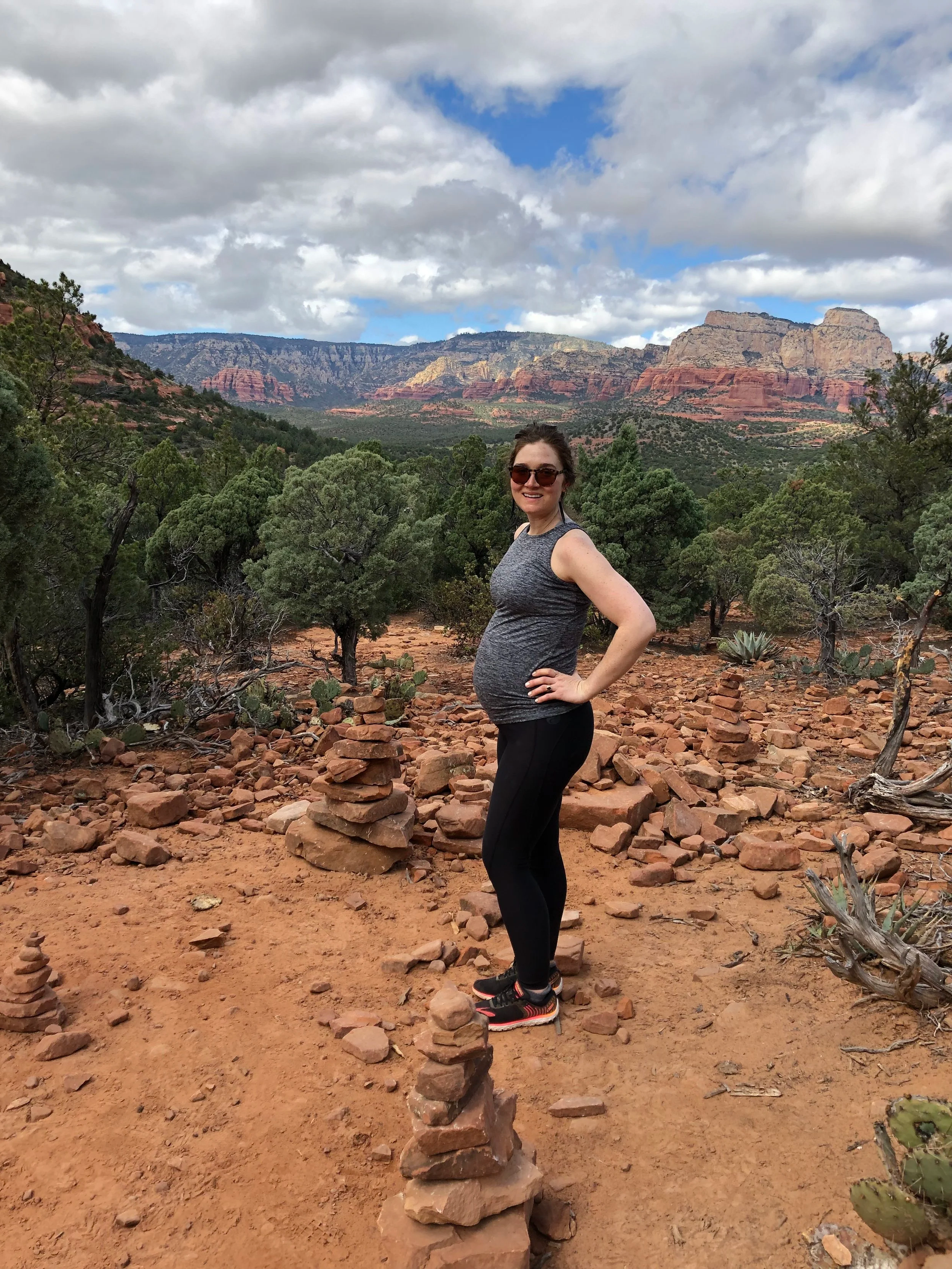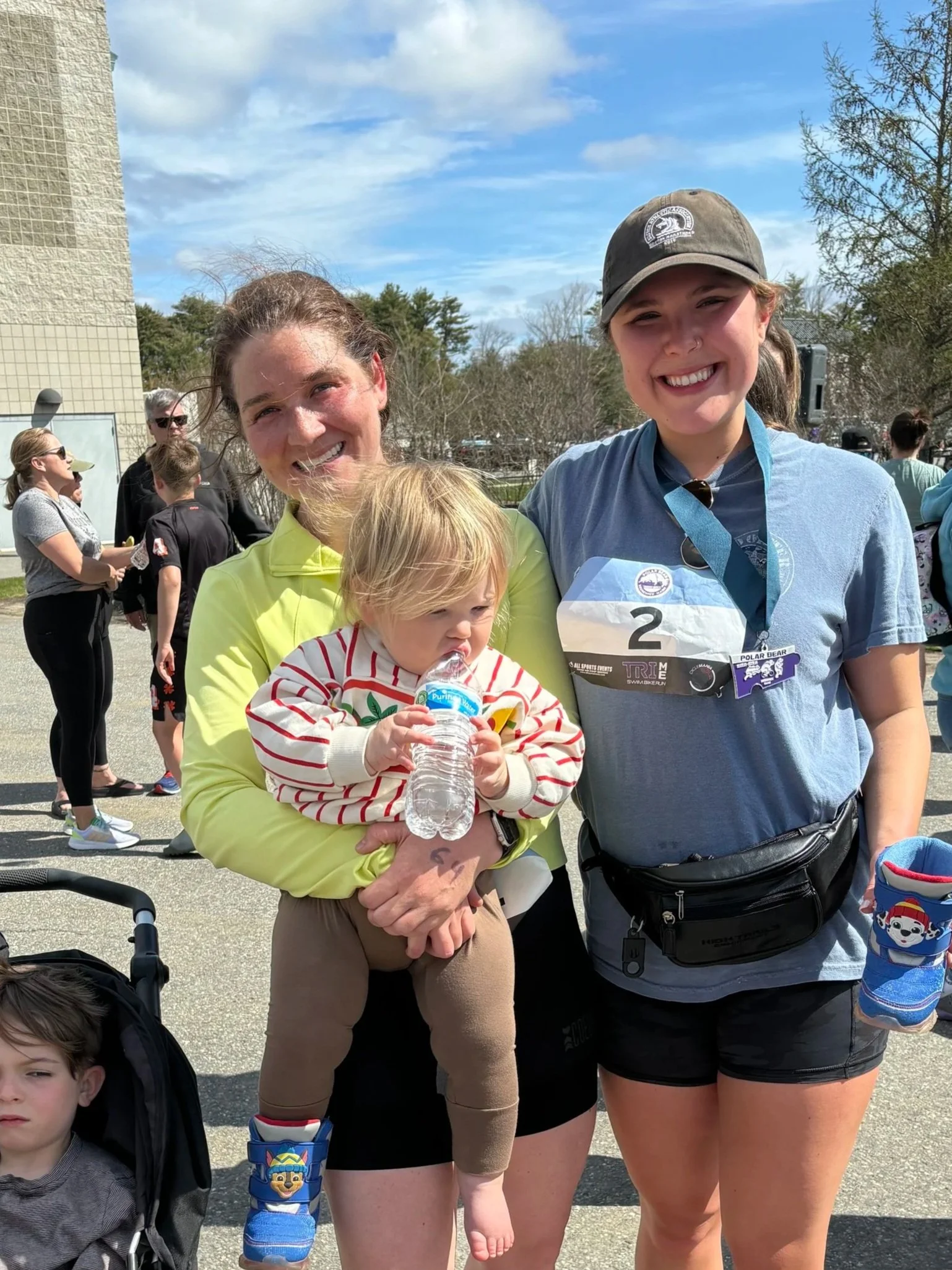My “Why”
I received a diagnosis of pelvic organ prolapse (POP) at about 8 weeks postpartum with my first child and was devastated. Totally gutted. I had expected to leave with a high-five and some exercises to do, not with a diagnosis I’d never heard of. One that sounded permanent and terrifying.
At 33, I was an avid exerciser — yoga, barre, spin, biking, running, hiking, even aerials! I had done months of pelvic floor prenatal exercises, a spin class on my due date, and a barre class at 41 weeks pregnant (days before my eventual induction). I was counting down the days until I could lace up my sneakers and run out the cortisol that had been coursing through my veins for the last two months as a first-time mother.
When my sweet, kind and compassionate, pelvic floor physical therapist, someone I knew and liked, told me I had an early staged prolapse, I immediately wanted to rip off her head.
My stomach dropped, and I was suddenly HYPER-aware of the pressure I felt in my vaginal area. All the exercise I’d done in pregnancy, and then the “support” garments and baby wearing I’d done over the past few weeks flashed in my mind while she explained what this meant. She did her best to answer my fervent questions and reassure me, but I retained very little of what she told me.
I left her office anxious and angry. Why hadn’t I ever heard of this before? Why had this happened? Was my body “broken?” What did this mean for my future?
I returned home to nurse my tiny baby, reading through clinical explanations of POP, the only thing Google would deliver, obsessing about my posture, and filled with dread.
Over the next several weeks, I did more PT sessions. Each time I did my exercises, I was overcome with anger. To make matters worse, the best thing I knew to do with my anger and feelings of overwhelm was exercise… and I couldn’t do that. Eventually, my need to run led me to a recommendation for a pessary, something I hadn’t heard of, and felt further devastating. I had no idea how common POP was, and felt so isolated and diminished by all the support I needed to get back to my active lifestyle.
After a few failed attempts (including a cube that had to be removed by my PCP - super cringe), I found a pessary that worked for me and helped me get back to all the activities I loved without feeling POP symptoms or worrying about further stressing my tissues. BUT the pessary management was a nightmare. I would go to the gym having remembered my pessary but without the cleanser I needed. Or I would lose track of it, wrapped in tissue somewhere in my bathroom, forgotten as I chased my toddler down the hall.
By this point, I knew I was not alone in this journey, but I had no idea just how many women were suffering alongside me.
I knew I needed something to help me keep this new part of my life sanitary, organized, and more contained, both literally and metaphorically. I wanted to focus less on my pelvic floor and more on my life. With nothing on the market, I knew we all deserved better.
Now I know more, and I know how much better we deserve. An estimated 25-50% of women over 18 will have some form of prolapse, and it can be physically and emotionally devastating.
We deserve better visibility of the needs that come with our evolving bodies, and the normalization of common gynecological conditions.
We deserve to know we are not alone in that evolution.
We deserve access to devices and accessories that help us manage our health and feel empowered, and comfortable doing it.
We deserve functionality and simplicity while we navigate new gynecological needs and thoughtful design to make the process a little more elevated and enjoyable.
The factors that make POP so prevalent and stigmatized are complex. While I knew I couldn’t solve the biggest issues, I was SURE I could solve a smaller issue - I could create a vessel, a container, a solution to alleviate the mental and emotional labor of self-managing a pessary. A stylized management system that does everything you need it to — contains your device, cleanser, supportive products, offers ventilation and drainage, and closes up to keep everything stored in one place. And, similar to pregnancy, after many months of building and growing, GYNKGO was born.
GYNKGO emerged from a deep belief that awareness and visibility is the best way to reduce shame and stigma. AND while our gynecological health evolves in ways that may surprise (and challenge) us, we do not need to sacrifice control, style, and composure through the journey.
At GYNKGO, we knew we could take a “trigger” for so many women and turn it into a “glimmer.”
Thank you for being here, and joining us in this movement.




